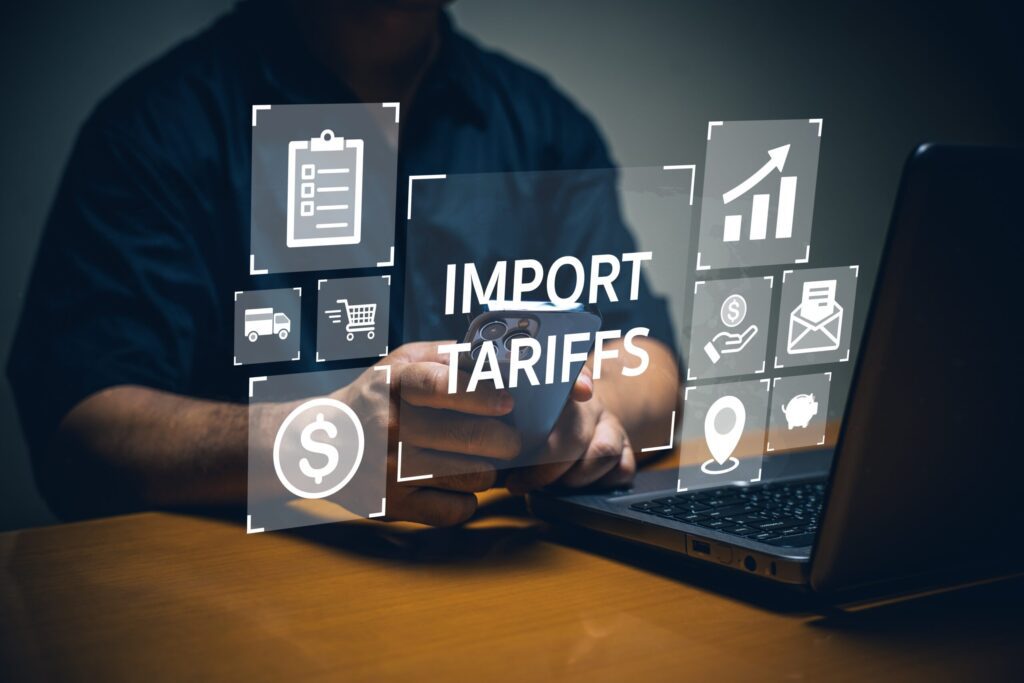The global change in tariffs and trade has redefined global supply chains, propelling the adoption of diversification strategy in the supply chain. Also, modification helps companies manage the impact of tariffs by reducing dependence on countries facing trade restrictions and enhance overall strength to cater supply chain disruptions. Further, the rising diversification in the supply chain is driving the demand for supply chain analytics for evaluating and optimizing the performance of a business organization’s supply chain processes.
Read also: US-China Trade War Update: What Businesses Need to Know
Furthermore, supply chain analytics offers benefits such as greater operational visibility, enhanced demand forecasting, improved inventory management, improved decision-making, and increased operational efficiency, among others. Further, the rising adoption of supply chain analytics in the retail & e-commerce sector helps to improve operational efficiency, enhance customer satisfaction, and maximize profitability. According to Consegic Business Intelligence, the supply chain analytics market size is estimated to reach over USD 26,902.79 Million by 2032 from a value of USD 9,163.80 Million in 2024 and is projected to grow by USD 10,430.00 Million in 2025, growing at a CAGR of 16.2% from 2025 to 2032. The post focuses on challenges and opportunities in supply chain diversification strategies due to tariffs, trade wars, and others.
Strategic Approaches to Supply Chain Diversification Strategies
The global supply chain landscape is undergoing a significant transformation, influenced by a variety of disruptive events over the past several years. Also, factors such as trade wars and tariffs have posed significant challenges for companies which in turn have created vulnerabilities in their supply chain strategies.
Multi-Shoring strategy
The muti-shoring strategy refers to dispersing business operations and supply chains across multiple locations, including both domestic and international sites. The strategy aims to reduce risk, improve efficiency, and optimize cost by expanding manufacturing footprint. Further, the shift from dependency on a single country to a multi-location strategy propels broader trend in supply chain management.
Tariff engineering
Tariff engineering is a strategic approach that importers use to legally minimize duty costs. The strategy involves changing the materials or components used to make a product, shifting the assembly process, or reclassifying imported products to lower-duty categories. Additionally, sourcing materials and parts from regions with lower tariff exposure helps to mitigate the impact of tariffs. Further, the rising adoption of free trade agreements (FTAs) to take advantage of lower tariff rates, which in turn helps to significantly reduce costs, which in turn is driving the supply chain management market progress.
Legal and regulatory strategies
Organizations facing complex international trade policies must adequately use the legal and regulatory frameworks to reduce the cost of tariffs. Additionally, the strategies include assessing local regulations, customs processes, trade agreements, and data privacy requirements as per the geographic operations is driving the demand for legal and regulatory strategies.
Financial strategies
The financial strategies aim to reduce risks, reduce costs, and enhance overall supply chain resilience by revised price policy, risk assessment, and leveraging trade agreements. Additionally, the global shift towards real-time monitoring and planning to predict potential challenges and make informed decisions. Moreover, the rising adoption of AI-powered tools to estimate different tariff situations, optimize operations, and adjust pricing in real time is driving the adoption of financial strategies in suppl chain disruption state.
Strategic Inventory Management
The trend towards maintaining safety stock levels helps businesses build resistance and flexibility at the time of supply chain disruptions. Additionally, the rising adoption of just-in-time philosophy as well as focus on safety stock levels, risk pooling, and inventory prioritizing is driving the adoption of strategic inventory management strategy in supply chain diversification.
Strategies to Adopt Due to Tariff and Trade Disruptions
Predictive Analysis
The rising adoption of advanced AI tools for mitigating the impact of tariffs on costs, inventory, and lead times, is helping businesses in identifying the most viable paths forward.
Double-down on Real-Time Visibility
The strategy helps to monitor demand, inventory, and logistics in real time, making it easier to adapt quickly to new tariffs by ensuring end-to-end visibility to businesses.
Automation
Automation plays a crucial role in enabling and optimizing supply chain diversification strategies. The rising adoption of advanced technologies such as AI, robotics, and Internet of Things (IoT) is paving the way for adoption by businesses to improve decision-making, reduce risks, and increase agility in the face of disruptions.
Recent Events Impacting International Commerce
Russia-Ukraine war which has been in this situation since 2022 has disrupted energy supplies and agricultural exports, across the globe which in turn has affected global markets. Additionally, the conflict has affected industry which now faces 10% tariffs on all imported planes and parts after the U.S. announced taxes on trade partners.
Conclusion
Tariffs and trade wars disrupt global supply chains, propelling businesses to adopt multi-shoring strategies as well as tariff engineering strategies, and legal and regulatory strategies to diversify their sourcing and manufacturing locations. Additionally, companies are increasingly adopting strategies such as financial strategies, strategic inventory management, and automation to mitigate risks and maintain competitiveness. Further, the rising adoption of strategies which include planning and data-driven decision-making are crucial for navigating uncertainties.

